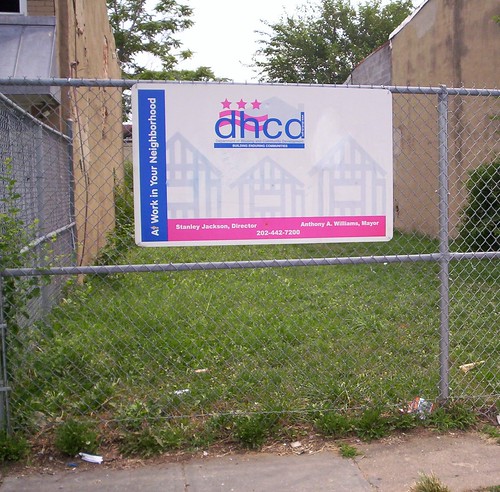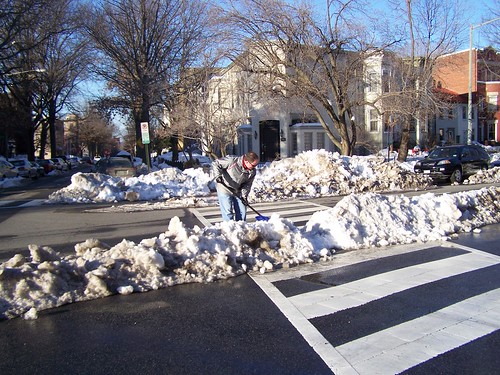More thoughts on what gets measured gets done

This DC Government owned property on Florida Avenue NW has been vacant for decades.
Someone wrote to me and pointed out that DC Government does have a reasonably extensive performance measurement webpage, Track DC. I hate to admit I wasn't familiar with this offering (there is too much to keep track of). It's definitely a start.
For example, in the entry on the relative uselessness of the DDOT Dashboard, I mentioned that 5 of the 6 buttons on the dashboard do not provide the means to drill down more deeply to more detailed information, and that the 6th button provided inadequate and incomplete info.
So I just looked at the Parks Department tab on Track DC. I think the site is somewhat clunky, but it does provide some interesting information, and the ability to go down one level to a summary of each subcategory of the data (e.g., on performance indicators). But it doesn't go deeper than that. E.g., what about a master table of all the maintenance requests, and then the ability to look at the data say and determine all the individual requests of a certain duration, and make some of your own assessments, etc.
It's great you can download GIS data files on their assets, but for those of us without a GIS program, why not just have the map links?
The website doesn't mention current planning activities or the reality that the #$%^&* Parks and Recreation Department doesn't have a master plan (well one was done in 2005 and never released to the public). Maybe this should be an overall indicator on these pages, about the status of agency master plans, links to them, along with detailed data about capital improvement planning.
How they rate themselves on spending their budget is somewhat interesting.
My criticism of performance indicators during the Williams administration was that there were pretty "gross" and easy to achieve because they weren't all that significant in terms of what they measured.
Granted I don't know what I'd want to measure, the things that most citizens think are important.
I mentioned in the blog entry a database on road conditions.
Here's some indicators I think are important generally, and these kinds of indicators should be focused on overall, rather than providing "too much" information by organizing metrics the way they are organized right now, at the agency level, on the Track DC website.
-- litter rates by block (we don't collect this information)
-- accident data for peds, bicyclists, and cars
-- pavement quality conditions by block
-- participation rates in recycling
-- crime statistics by police district and block, what's going up, what isn't
-- number of neighborhoods with plans (none, we don't do neighborhood plans)
-- use rates for parks and rec centers
-- statistics for transportation mode split (walking, biking, transit, car) by neighborhood (we'd need a good research program...)
-- vacant buildings, by neighborhood/commercial district, how long they've been vacant
-- nuisance property and environmental crimes (i.e., dumping)
-- number of ideas offered by citizens, and the take up rate, database listing of ideas
-- graffiti -- reports and eradication
-- sidewalk conditions and planting strip maintenance (e.g., I've shown photos in my blogs of things that don't get corrected for years)
-- school data (enrollments, success, etc.) + for private and charter schools too
-- graduation data for DCPS students
-- data on success rates of DCPS students in college
-- snow removal -- not just from streets, but from pedestrian areas, bus stops and transit stations, public buildings, etc.
-- time to open a business (this is really hard, but would be interesting to measure)
-- business retention and failure rates
-- grass cutting records for various public sites/installations (such as schools and various public reservations)
-- status data on all publicly owned properties
-- status data on community development corporations and companies like David Wilmot's cash cow of group homes for the developmentally disabled
-- youth crime statistics and status
-- water main breaks and repair status
My issue with the DC Government call center (311/online) is I never see any reports on what people call about. Do they sift out stuff and identify (and address) structural problems?

A committed resident clearing the partially blocked crosswalk median on his block of Maryland Avenue NE.
Labels: civic engagement, data and analysis, provision of public services, public information



0 Comments:
Post a Comment
<< Home